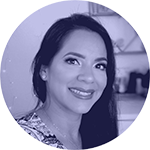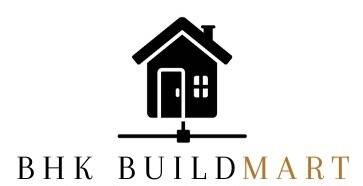
As a result, decision-makers need to carefully evaluate fixed costs when making investment decisions or assessing the feasibility of new projects. Variable costs, being directly linked to production or sales volume, require close monitoring and management to ensure cost efficiency and profitability. Understanding the difference between fixed and variable costs is essential for managing a business’s finances. These costs form the foundation of any cost structure and play a critical role in pricing, budgeting, and profit margin analysis. In this guide, we will explore what fixed and variable costs are, how they differ, and why they are important for financial decision-making.
What is the difference between variable and fixed costs?

But first, you need to know the difference between these two cost categories, and how to tell them apart on your financial statements. Fixed costs are generally easier to plan, manage, and budget for than variable costs. However, as a business owner, it is crucial to monitor and understand how both fixed and variable costs payroll impact your business as they determine the price level of your goods and services. • Fixed expenses remain constant (e.g., rent, salaries), aiding long-term planning, while variable expenses fluctuate with activity, offering budgeting flexibility.
A Primer on Accrued Expenses (6 Examples)
Get free guides, articles, tools and calculators to help you navigate the financial side of your business with ease. Not sure where to start or which accounting service fits your needs? Our team is ready to learn about your business and guide you to the right solution.

Understanding Fixed vs. Variable Expenses Makes Your Planning More Effective
They are incurred whether a firm manufactures 100 widgets or 1,000 widgets. In preparing a budget, fixed costs may include rent, depreciation, and supervisors’ salaries. Manufacturing overhead may include such items as property taxes and insurance.
- This means that a high fixed-cost business can make very large profits when sales spike, but can incur equally large losses when sales decline.
- With a higher operating leverage, a business can generate more profit.
- Whether it’s the office Christmas party or a week in Acapulco with your top clients, any event you have to plan will come with fixed and variable costs.
- In fact, taking care of various operational matters of the company every month is not easy.
- This is typically a contractually agreed-upon term that does not fluctuate unless both landlords and tenants agree to renegotiate a lease agreement.
- Fixed costs typically stay the same for a specific period and they are often time-related.
Fixed costs are a type of business expense that remains stable (the same) regardless of business performance. Whether your company grows rapidly or doesn’t do quite so well, your landlord Insurance Accounting is still going to charge you the same amount. You can also manage various other matters in the company’s operations including managing documents and finances. Contact AdIns now and request a free demo to optimize your business operations. In fact, taking care of various operational matters of the company every month is not easy. Moreover, not only one part needs to be taken care of, but all aspects need to run well so that sales and production are not disrupted.
- Not sure where to start or which accounting service fits your needs?
- In a production facility, labor and material costs are usually variable costs that increase as the volume of production increases.
- This article will explain in depth about examples of fixed costs and variable costs along with their differences, so that you can better understand financial management in your business.
- It is worth noting that some costs exhibit characteristics of both variable and fixed costs, known as mixed or semi-variable costs.
- While fixed costs are incurred regardless of the level of activity, variable costs increase or decrease in proportion to the level of production.
- Two primary categories of costs that every business must understand are fixed costs and variable costs.
- These are all valid ways to cut variable costs and increase your profit margins.
- They can decrease or increase rapidly, cut your profit margins, or result in a steep loss or a whirlwind profit for the business.
- “Absorption Costing Definition.” Accounting Tools, 16 July 2024, /articles/absorption-costing.
- He is an expert on personal finance, corporate finance and real estate and has assisted thousands of clients in meeting their financial goals over his career.
- If no production or services are provided, then there should be no variable costs.
This can lead to a heightened level of competition within an industry, since they all likely have the same cost structure, and must all cover their fixed costs. Once fixed costs have been paid for, all additional sales typically have quite high margins. This means that a high fixed-cost business can make very large profits when sales spike, but can incur equally large losses when sales decline. Variable costs change directly in relation to the output of what is the difference between a fixed cost and a variable cost? a business, so when there is no output, there are no variable costs. A good example of variable costs is the operational expenses that increase or decrease based on the business activity.
Calculating Variable Costs
If you sell more widgets, you’ll need to buy more widget components, and so the variable cost of raw materials increases. In general, businesses should aim to strike a balance between variable and fixed costs. They should identify the variable and fixed costs and determine the optimal level of each. This will help businesses achieve their goals while maintaining financial stability. Fixed costs do not change with the level of activity, which means that businesses can plan and budget more effectively. Fixed costs also provide stability to the business, which can be beneficial in the long run.
- An example of a semi-variable cost can be the electricity bill for your business.
- To determine the fixed cost per unit, divide the total fixed cost by the number of units for sale.
- Operating leverage measures the degree to which a business can increase operating income by increasing revenue.
- Understanding fixed costs is crucial for businesses as they need to cover these expenses regularly, regardless of their production or sales levels.
- Startups have a number of fixed costs, especially those with physical locations (as opposed to fully remote companies).
- Especially if you run a smaller, home-based ecommerce business, like an Etsy store, you may avoid many of the costs other ecommerce stores deal with.
Definition of Fixed Expenses

These costs are directly related to the company’s day-to-day operational activities. Common examples of variable costs are raw material costs, direct labor wages, and shipping costs. Fixed costs are costs that do not change even if the volume of production or sales changes. These costs must be paid by the company, regardless of how many goods or services are produced or sold. In other words, fixed costs are costs that remain constant in the short term and are not affected by daily business activities.
